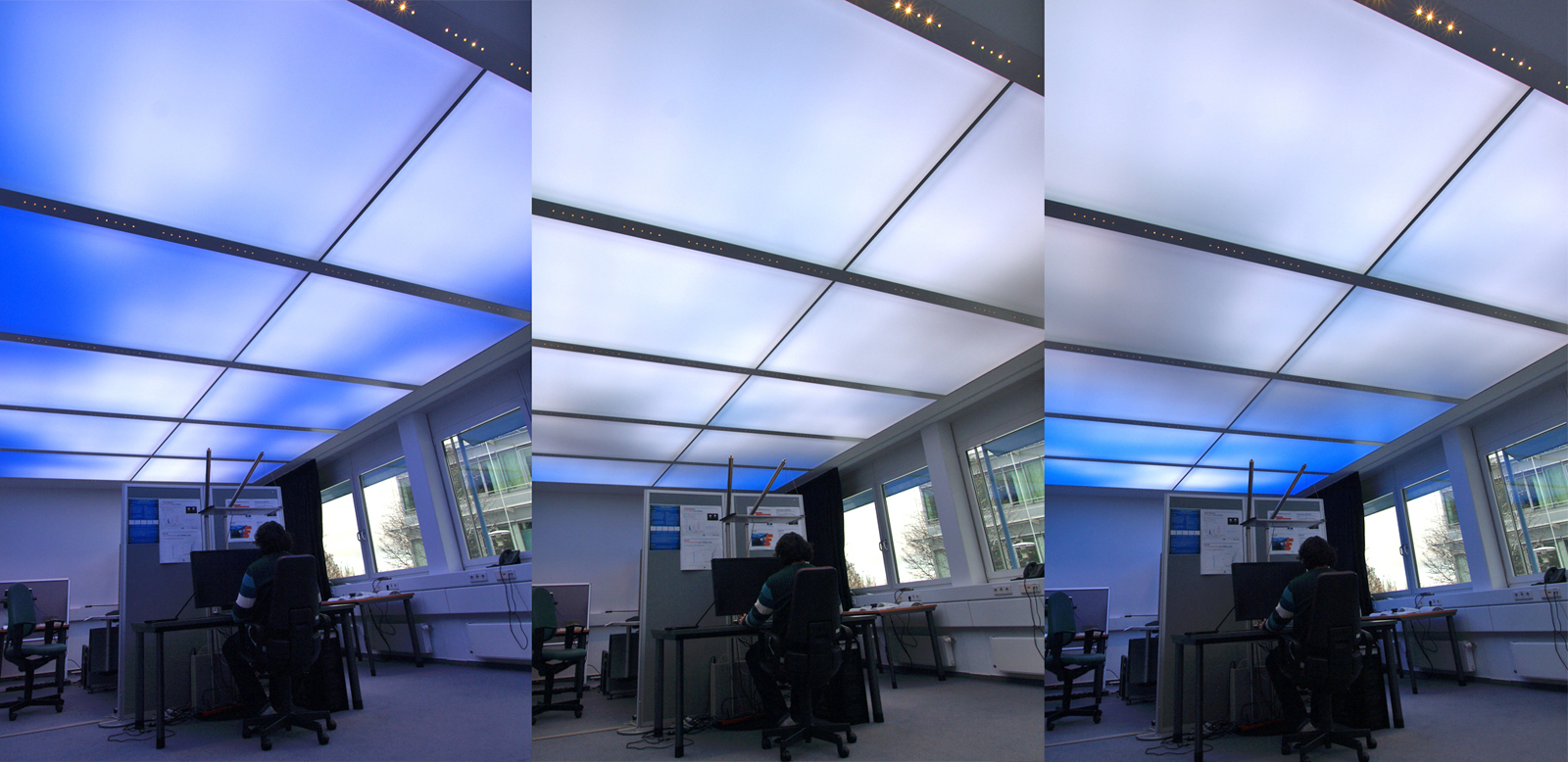CeBIT 2012
Sky light sky bright - in the office
Working under the open sky – it sounds enticing, but it’s seldom really a practical option. Now, a dynamic luminous ceiling brings the sky into office spaces by creating the effect of passing clouds. This kind of lighting generates a pleasant working environment.

As the wind swiftly blows clouds across the sky, the light is in a constant state of change. The feeling of spaciousness and freedom we experience outdoors is exactly what researchers from the Stuttgart-based Fraunhofer Institute for Industrial Engineering IAO replicate indoors: a luminous ceiling that extends across the entire room simulates lighting conditions which resemble those produced by passing clouds – conveying the impression that you are sitting outdoors.
The innovative luminous ceiling, which was developed by the Fraunhofer researchers in close collaboration with their partners at LEiDs GmbH, consists of 50cm by 50cm tiles. “Each tile comprises an LED board with 288 light emitting diodes (LEDs),” states Dr. Matthias Bues, head of department at the IAO. “The board is mounted on the ceiling. A diffuser film in matt white is attached approximately 30cm beneath the LEDs and ensures that the individual points of light are not perceived as such. This diffuser film creates homogenous lighting that illuminates the room throughout.” The researchers use a combination of red, blue, green and white LEDs in order to produce the full light spectrum. This combination makes it possible to generate more than 16 million hues. What’s more, the white LEDs are more energy efficient than the colored lights, which keeps the energy costs to a minimum.
The main focus in developing the virtual sky was to simulate natural lighting conditions on a cloudy day. To achieve this goal, the researchers carefully examined natural light to find out how – and how quickly – the light spectrum changes when clouds move across the sky. “The LEDs allow us to simulate these dynamic changes in lighting in a way that is not directly obvious to the naked eye. Otherwise the lighting might distract people from their work. But it does need to fluctuate enough to promote concentration and heighten alertness,” says Bues. The results of a preliminary study indicate that users find this dynamic lighting to be extremely pleasant. The study involved ten volunteers who carried out their daily work over the course of four days under these lighting conditions with a lighting surface of 30cm by 60cm. Throughout the first day, the lighting remained static. On the second day, it fluctuated gently, and on the third day the fluctuations were rapid. On the fourth day, the participants could choose which type of lighting they wanted, and 80 percent opted for the fast, dynamic lighting.
A prototype of this virtual sky has now been developed that contains a total of 34,560 LEDs spanning an area of 34 square meters. At full power, the “sky” lights up with an intensity of more than 3,000 lux, but 500 to 1,000 lux is sufficient to create a comfortable level of lighting.
From March 6 -10, 2012 at the CeBIT trade fair in Hannover, the researchers will be exhibiting a 2.8m by 2.8m virtual sky at the joint Fraunhofer booth in Hall 26, Booth E 08. Initial inquiries regarding the new lighting have already come in, mainly for use in conference rooms. The virtual sky currently costs approximately 1,000 euros per square meter, but this price will come down, since the more units are produced, the more cost-effective each luminous ceiling will be.